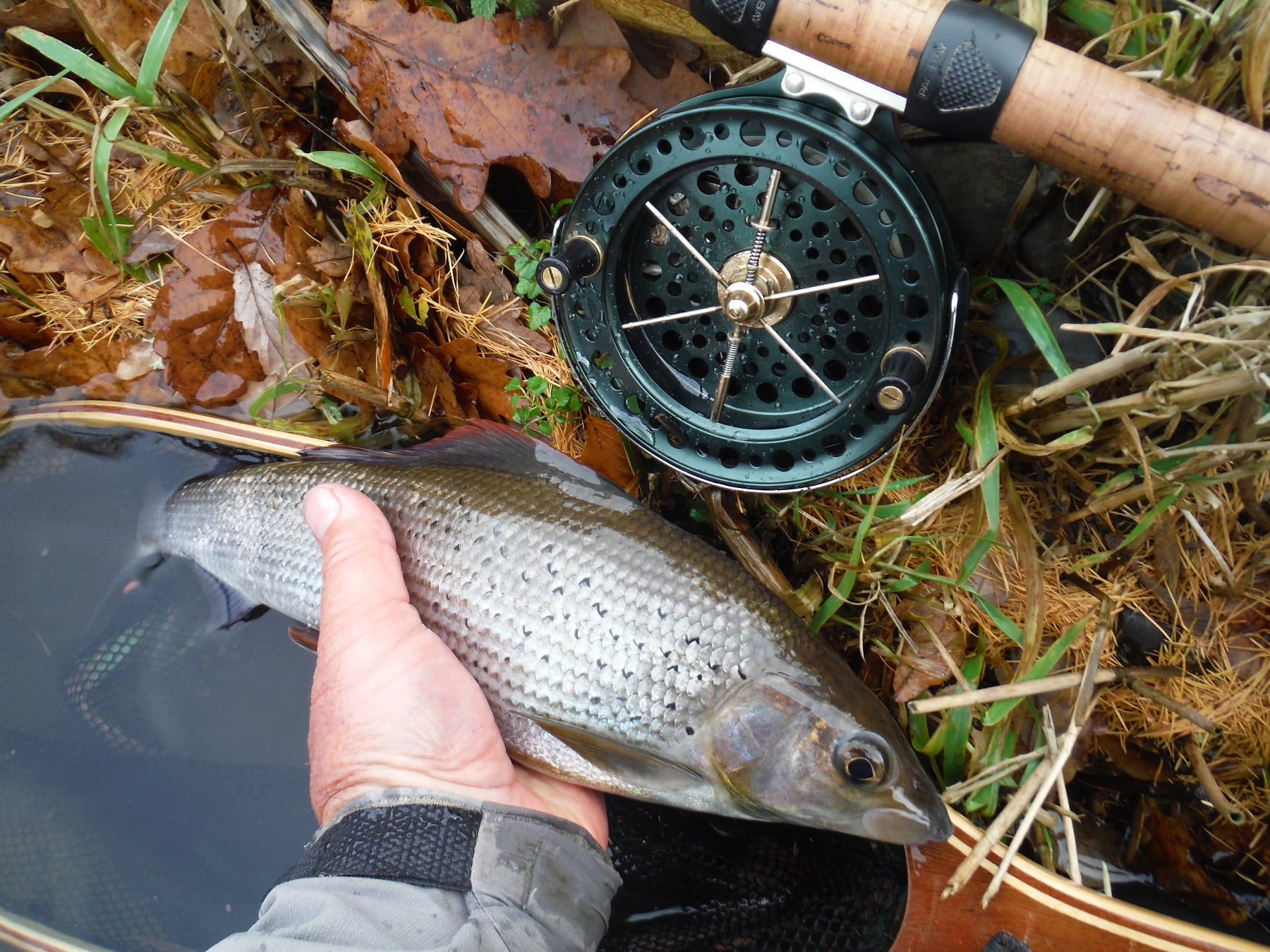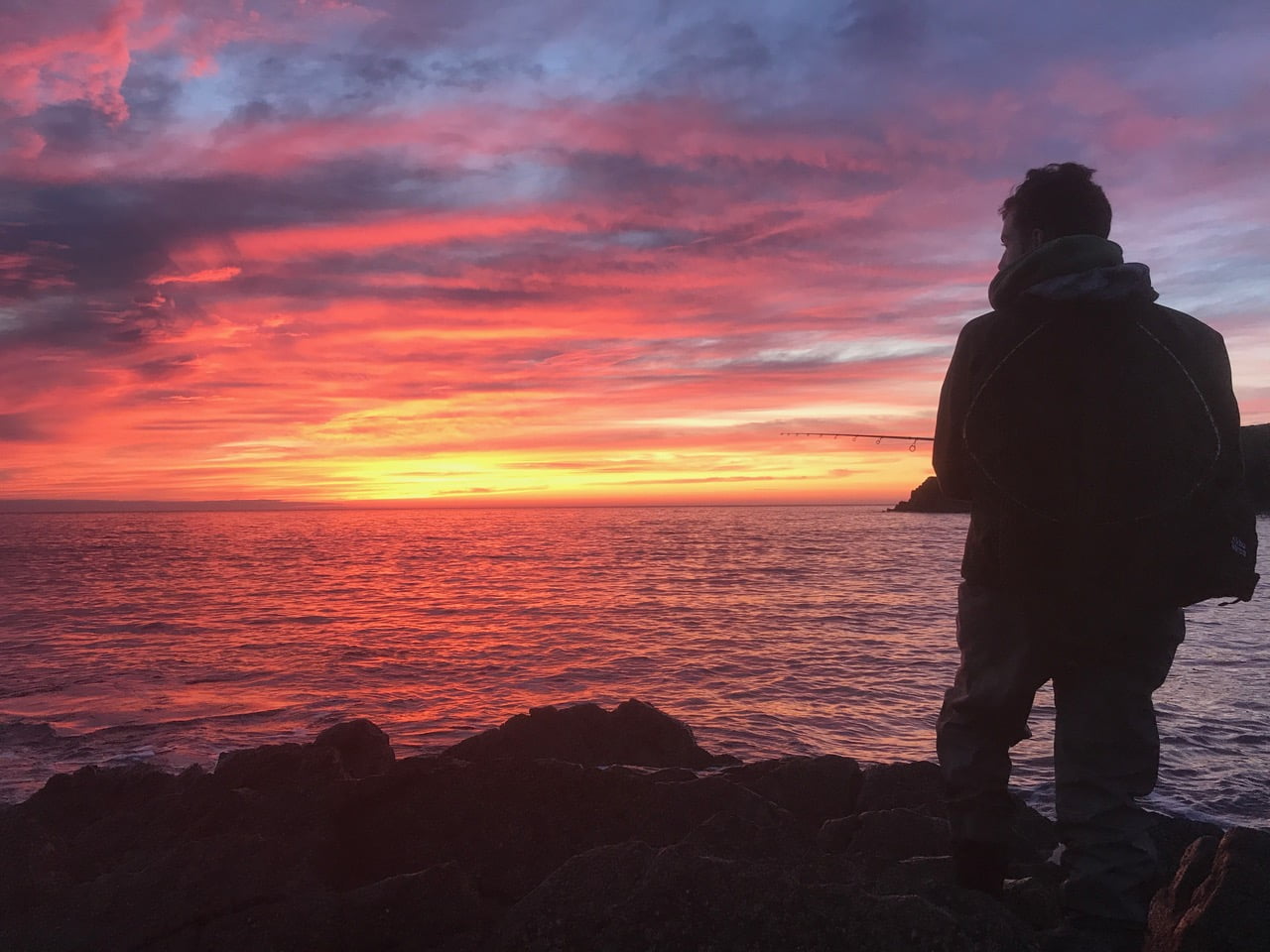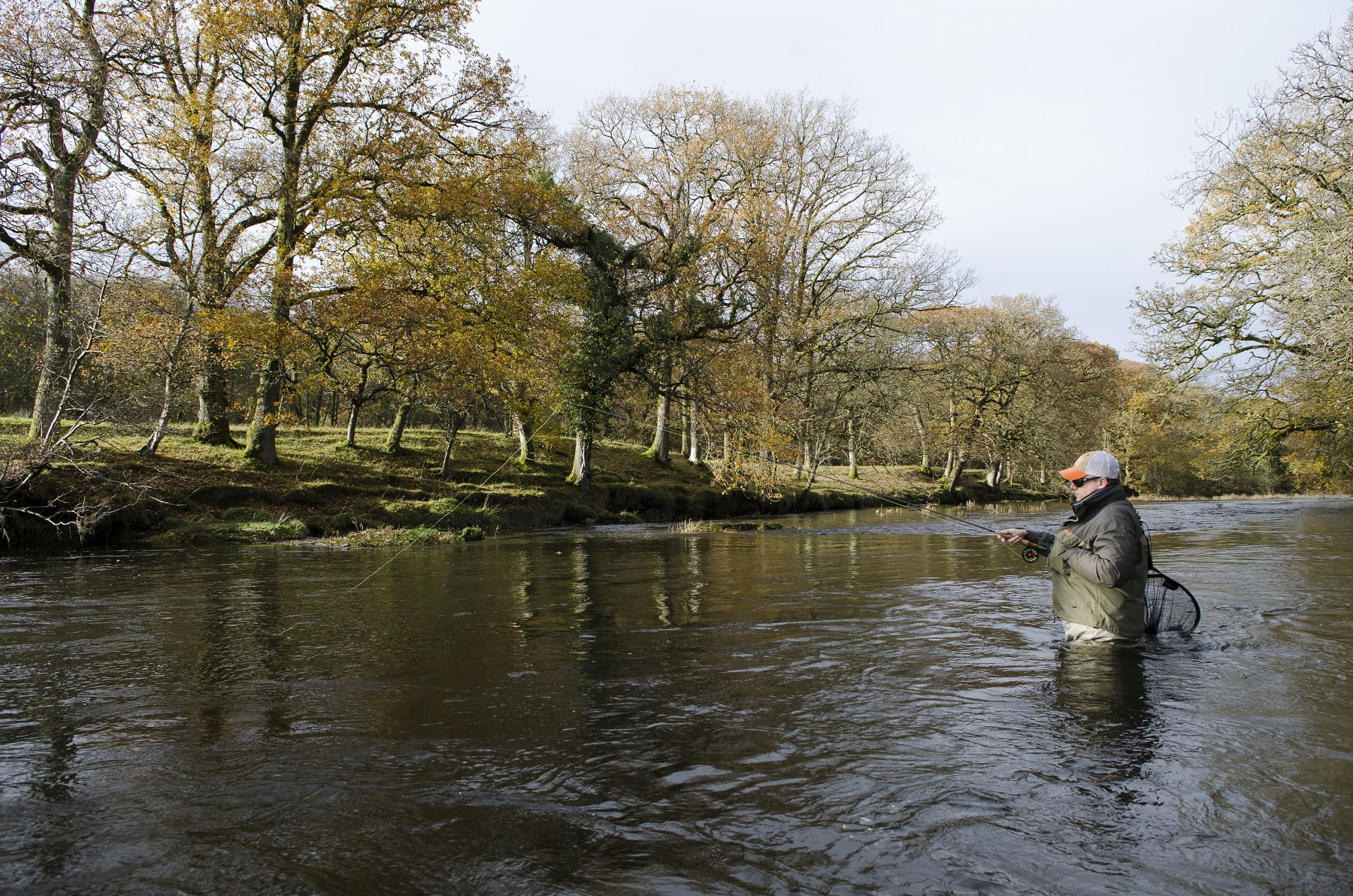Trotting for Grayling – How To Guide
In this article fishing guide Oliver Burch explains how to trot for grayling on Welsh rivers, a great method for the winter months.
Some of our Welsh river systems, notably the upper Wye, Dee and upper Severn, are blessed with grayling as well as trout, which means that game angling can be extended right through the winter. Autumn grayling fishing with the dry fly or a team of spiders is delightful sport, but there comes a point, usually in early November, when temperatures and light levels have fallen to the extent that the fish are no longer looking up.
Now a choice has to be made. Since Eastern Europe introduced us to the new heavy nymphing styles a generation ago, many British anglers switch for the rest of the season to some highly effective modern methods of trundling teams of nymphs along the bottom. Before that revolution in the 90s, British anglers particularly in the North would either hang up their fly rod until the spring or move to “long trotting” methods, in which a bait under a float was run long distances downstream to present it to shoals of winter grayling.
Today long trotting is still recommended as a very effective and enjoyable method and some of our fishery owners allow it, either from the beginning of November or from the ending of summer time. If you are a coarse fisherman, you may already have some of the tackle needed.
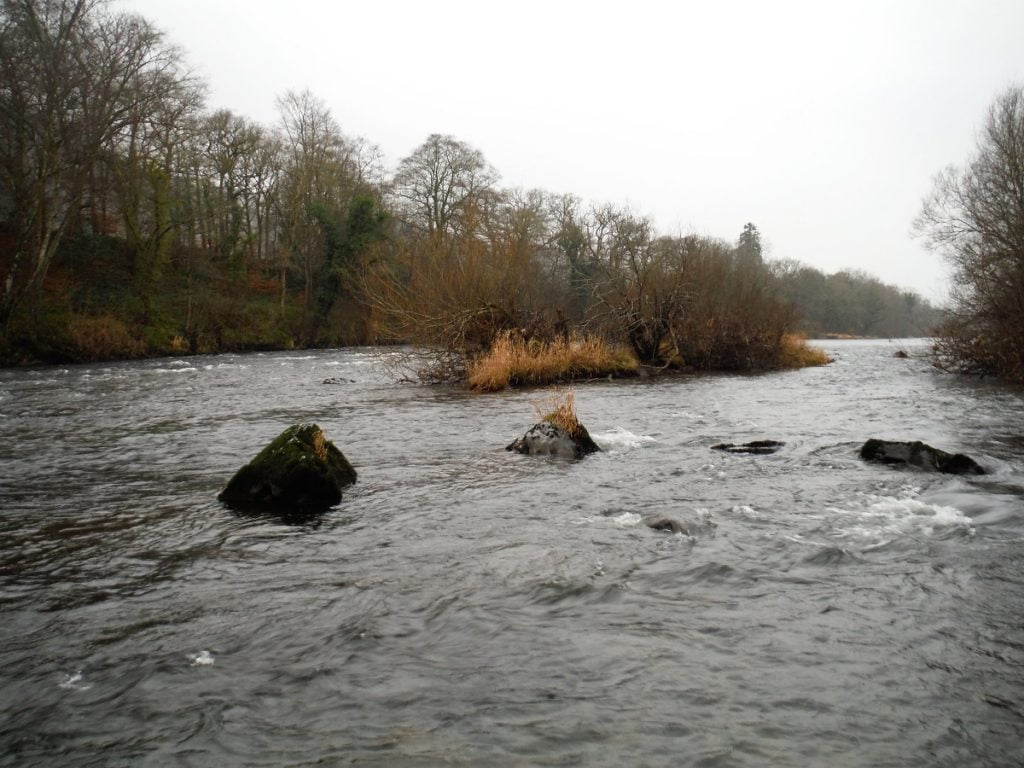
This is one of the rare occasions when the rod is less important than the reel. You need an ordinary coarse match or float-fishing rod with small, high, stand-off rings (to prevent the wet line sticking to the rod blank). I use a 14 foot rod for the open Wye and a 12 foot rod for more constricted space on tributaries.
Modern match rods tend to be tip actioned, but try to find one with at least some through action in the middle section because grayling have soft mouths and it is very easy to pull out of a big one downstream in a strong winter current.
You can trot and cast reasonably well with a fixed spool reel (a closed face match version is less likely to tangle), but a good centre pin reel beats any fixed spool hands down, and you will discover that the further the float travels, the greater this advantage becomes. I promise that once you have tried a “pin” you will not want to go back to a fixed spool.
You need one with a spool diameter of 4 inches or more, width of ¾ or 1 inch, and for beginners I would recommend a line guard to avoid tangles. There should be an easily engaged click check. Most importantly, the reel should run freely for a couple of minutes when flicked and the balance should be near enough perfect. Manufacturers like Youngs have built fine centre pins for many years (and you will pay a fair bit for them), but Glasgow Angling and Stillwater usually have something workmanlike on offer for under 100 pounds.
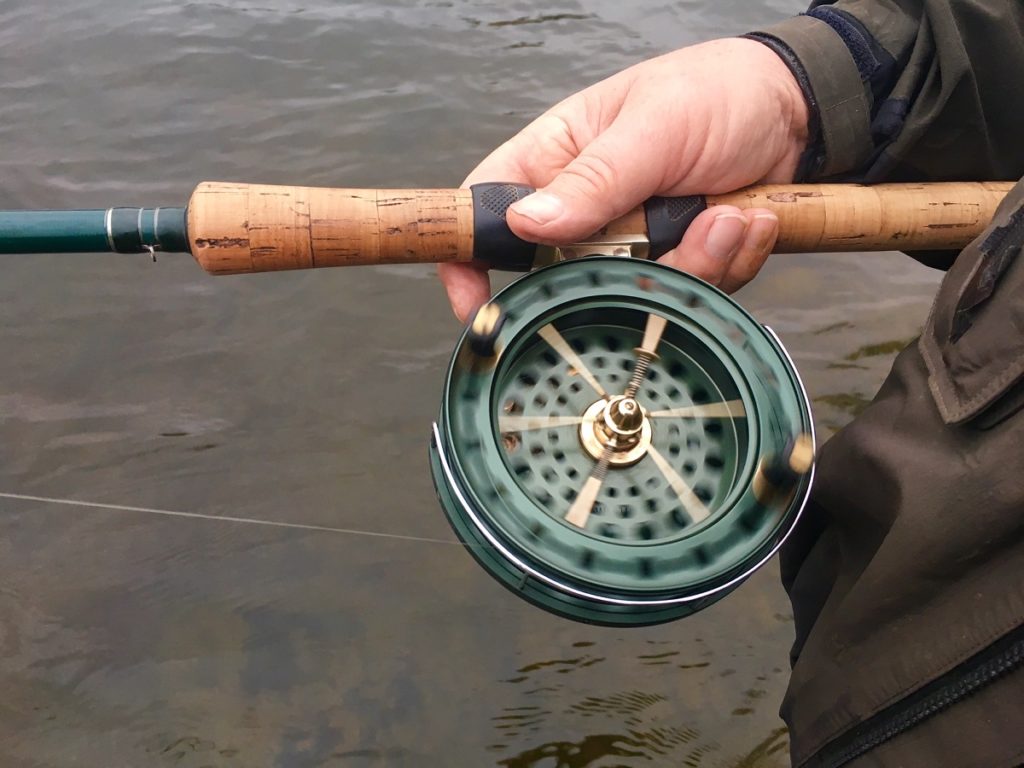
Load the reel with 100 yards of fine monofilament of about 3 pounds breaking strain, and note that today you can buy copolymer coated nylon which naturally floats and picks up quickly on the strike so that the chore of greasing 50 yards of line before you start can be avoided.
The choice of a float is important, because it should be visible at long distances, cast well, carry enough weight and bulk for the current to draw line off the reel, and yet not offer undue resistance to a taking fish. Back in the day, we used to buy balsa wood and piano wire from model shops before manufacturing partially self-cocking floats to the master Reg Righyni’s specification given in his famous book Grayling. Today a wire-stemmed Avon is the style of ready-made float you require and Woody’s Tackle shop in Hereford has good ones made especially for the Wye. These come in sizes to carry from 2 to 6 grams of weight. I usually use 5 or 6 gram floats for the main river, and 3 or 4 gram for the tributaries. Antennae are coloured in orange, yellow, and very occasionally black, depending on the needs of the angler’s eyesight and the background lighting.
Attach the float with three rubber bands: on the antenna, and at top and bottom of the wire stem, to provide enough friction so that the float height can be adjusted as needed but will not move on the line when striking.
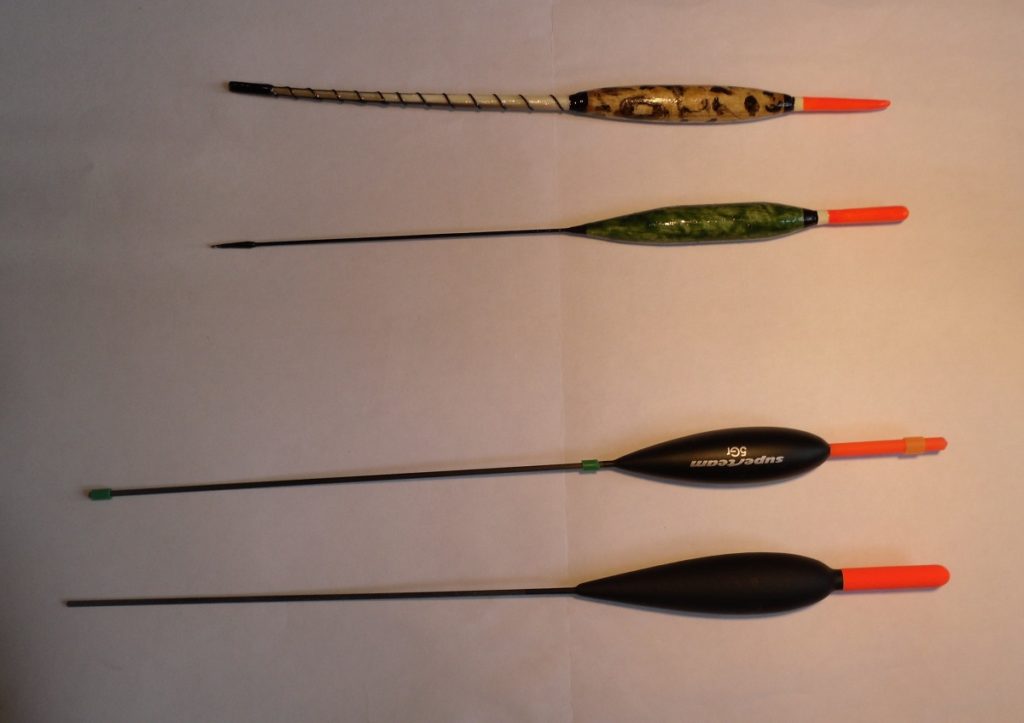
Below the float I use a very small swivel, size 22 or 24, at the end of the main line. This overcomes the tendency of a double maggot bait in particular to spin when being wound upstream and to put kinks into the main line. Instead I attach a hook link of about 18 inches of 6X fluorocarbon to the far end of the swivel. Purpose-made fine wire maggot hooks intended for roach and dace have proved very poor for grayling fishing – they open up all too easily when playing a fish at range in a strong current. Instead I use ordinary round bend dry fly hooks in size 16 and 18. The shots can be attached in a group just above the swivel, possibly with a dust shot on the hook link if you think the bait is waving around too much in turbulent water. Alternatively, in a swim where the depth varies so that you need to hold the tackle back a lot, try spacing the shots out shirt button style.
The traditional northern bait for grayling trotting was a small red worm. Baiting with worm is restricted on most of the Wye beats I fish, so I usually use double red maggot on a size 16 hook when fish are biting confidently or a single red maggot on size 18 when they are more nervous. Half a pint of maggots is usually enough for the day.
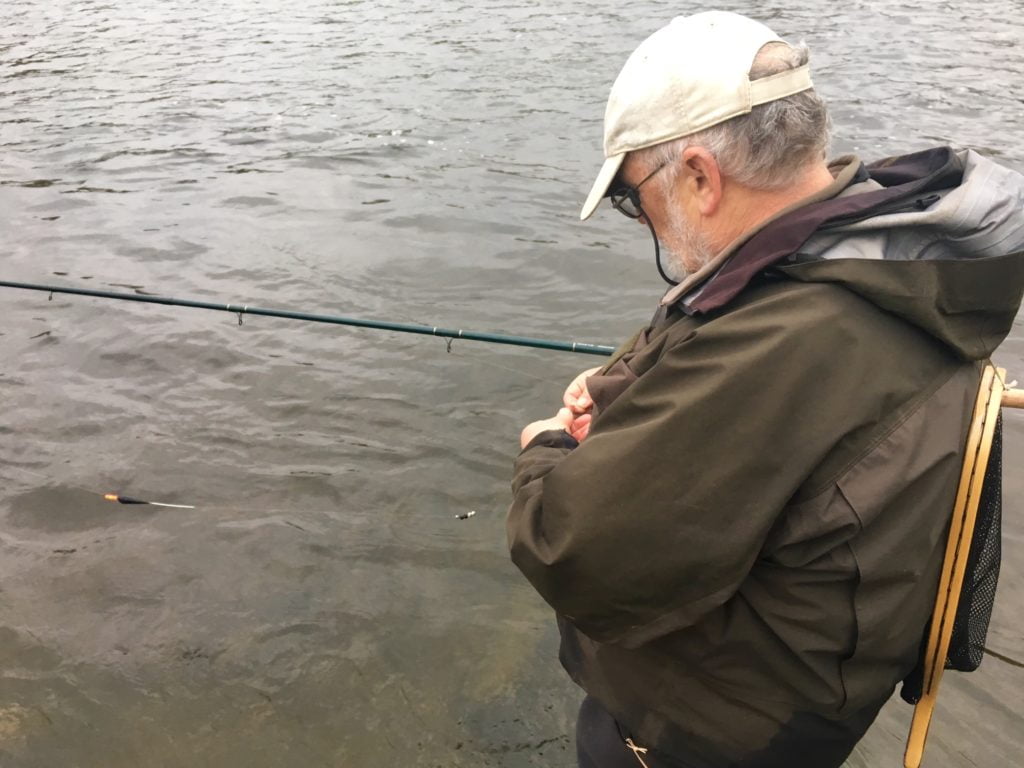
With experience you will learn the likely positions for winter grayling shoals, but a steady run over a gravel bottom is usually a good place to start. Casting requirements when trotting are not that demanding. The method works at its best when you are positioned at the head of the line of trot, and this may well involve deep wading to get a good stance.
In the case of a centre pin you will hear about Wallis-casting in which the reel is set spinning by a quick pull as you swing the tackle out to the start position. This takes some practice to achieve without overruns, but most situations can be managed easily enough by pulling one, two or three loops of line off between the lower rings of the rod, holding them in separate crooked fingers of your left hand and releasing them in turn as the tackle swings out. This is actually easier than it sounds. Once the float is on its way downstream on the chosen line, lay the rod down so that the reel is horizontal and the rim of the spool rotating steadily just beneath your thumb. You can feather with your thumb to hold the tackle back slightly if you choose; otherwise let it run free until the float suddenly disappears. When that happens, drop your thumb at once to lock the reel, swing back with the rod to tighten and you will have the most amazing feeling of pulsing life through your hand as you connect with the fish. This works with surprising efficiency, even at 50 and 60 yards distance.
The main limitation of this method is probably your own eyesight. For safety’s sake engage the reel check at once and take your time in carefully playing your grayling upstream, ideally just past your stance in the current so that you can net it from below. You will find that a good grayling will erect that big dorsal fin and give you a lot of trouble as it tacks back and forth and uses the flow against you.
Use a small pair of forceps for careful unhooking and keep the grayling loose in the net before release. Grayling are usually lip-hooked on maggots, but their mouths are smaller and they are more easily injured than trout. Otherwise, when reeling the tackle back for a new trot, try to lay the rod over to the side to avoid the tackle running upstream on the fishing line you have chosen. A shoal of grayling will put up with a lot, but float tackle continually racing overhead will move them sooner rather than later. Check the maggot regularly and change it if it has been sucked.
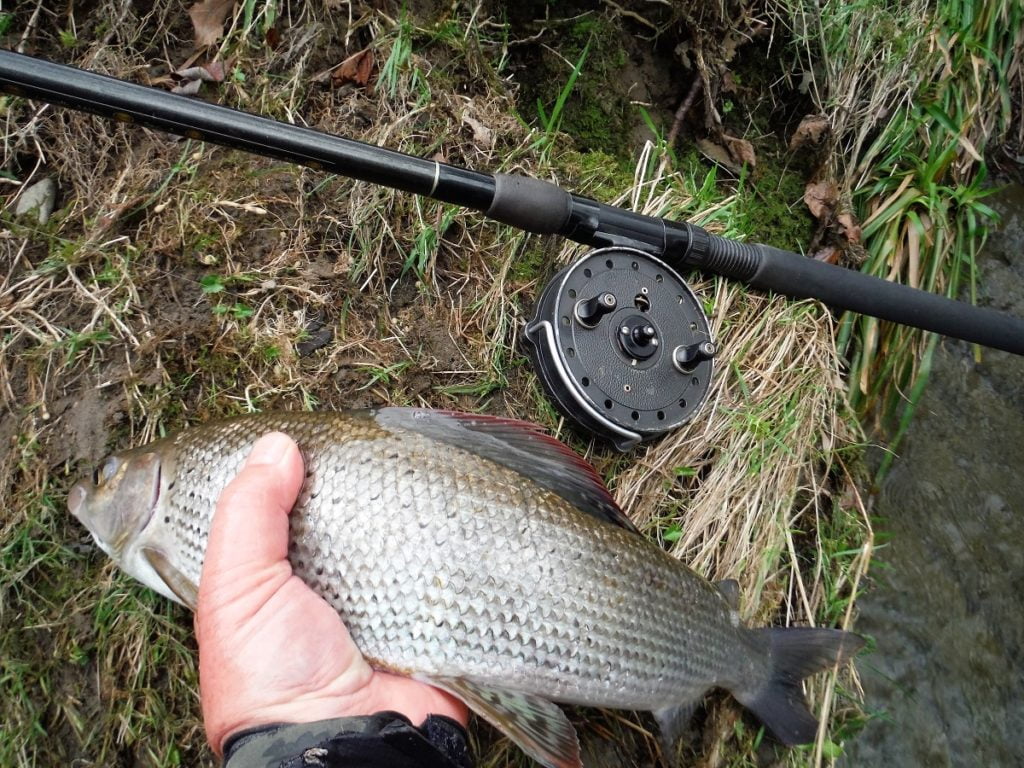
There are a few points to make about choice of method. Trotting for grayling in winter is a delightful “fine and far-off” method and a good way to search large areas of river, but it isn’t right for every occasion and fly fishing is sometimes more efficient. If the water is high and slightly coloured, trotting is usually very successful, but with the water low and clear a team of nymphs may score better.
Some anglers use a trotting rod to locate grayling shoals initially and then work at close range with the fly rod and nymphs. I like to use trotting in order to reach deep and distant water on the main rivers which cannot be waded and fly-fished, but for the same reason I am not quite so keen on it when fishing narrow tributaries in which every corner, run and pot can be reached into with the nymphs. On the other hand (and very reasonably) some owners encourage winter trotting rather than fly-fishing in order to restrict extensive wading around salmon and trout redds in the gravel.
Another point to bear in mind is that in really hard weather with the air temperature below freezing through the day, trotting becomes extremely frustrating because the tiny rings used on the rod quickly ice up as the wet line is continuously being reeled in. Plus one degree is all you need for the system to work properly, but below that a team of nymphs and the fly rod are easier to manage.
Finally, I have been discussing grayling fishing here but don’t forget that long trotting with the tackle slightly scaled up in strength is also a very effective method for taking chub and even barbel at the appropriate season.
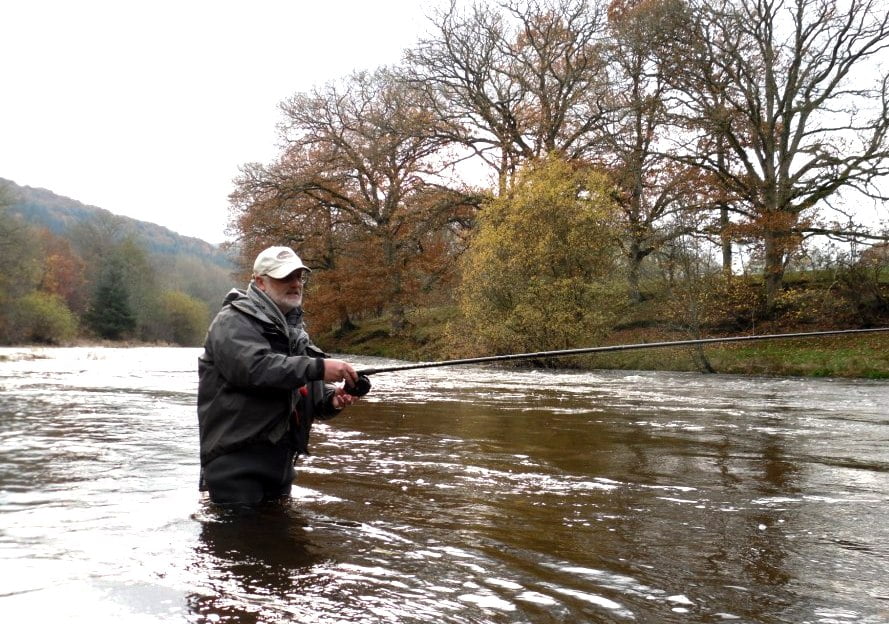
Grayling trotting Venues to try:
The Wye and Usk Foundation’s www.fishingpassport.co.uk market a large number of beats offering trotting on the Wye and tributaries.
Deserving special mention for grayling are Abernant, Gromaine, Llangoed and Lower Llanstephan with The Rectory on the main river, plus the gorgeous three miles of Cefnllysgwynne on the Irfon.
The Ithon at Llandewi has some large grayling and just across the English border the Leen and Court of Noke beats on the Herefordshire Arrow are also worthy of note.
GPAIAC (the Builth town water) offers excellent and very reasonably priced grayling trotting on both Wye and Irfon (day tickets from Conti’s Newsagents in town), and the Cammarch Hotel (01 591 620545) allows trotting on the middle of its three beautiful grayling beats on the Irfon (non-residents can often get a day ticket by calling the evening before).
Words & Images: Oliver Burch
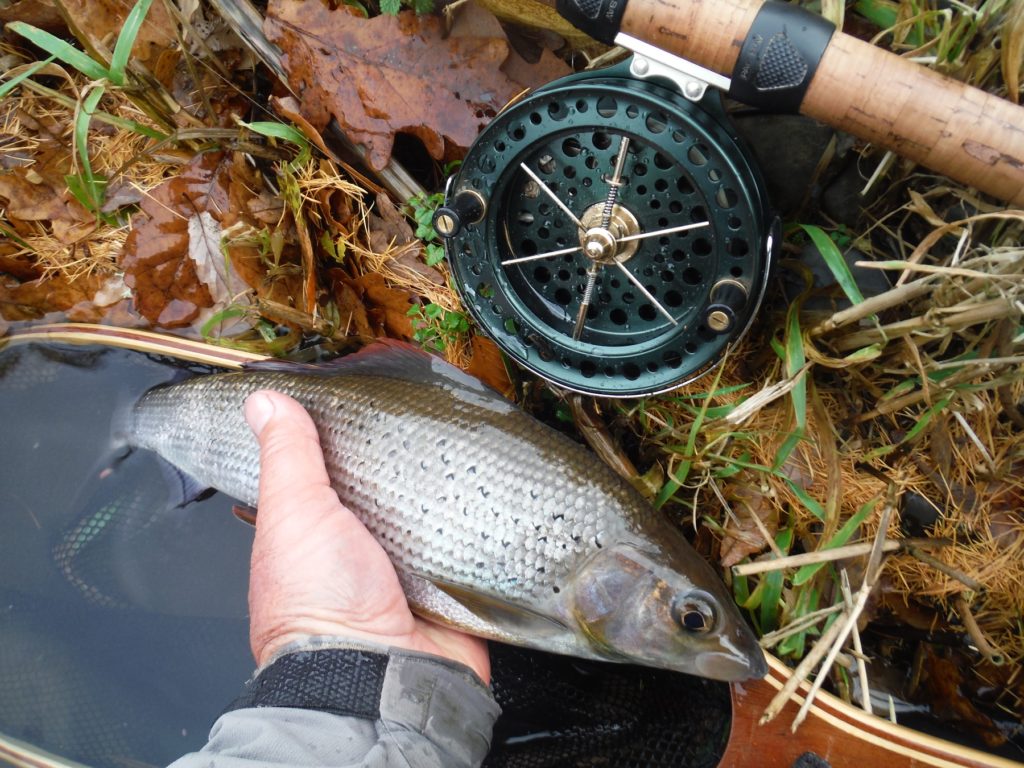
For more trotting for grayling inspiration check out our river Dee grayling fishing video.
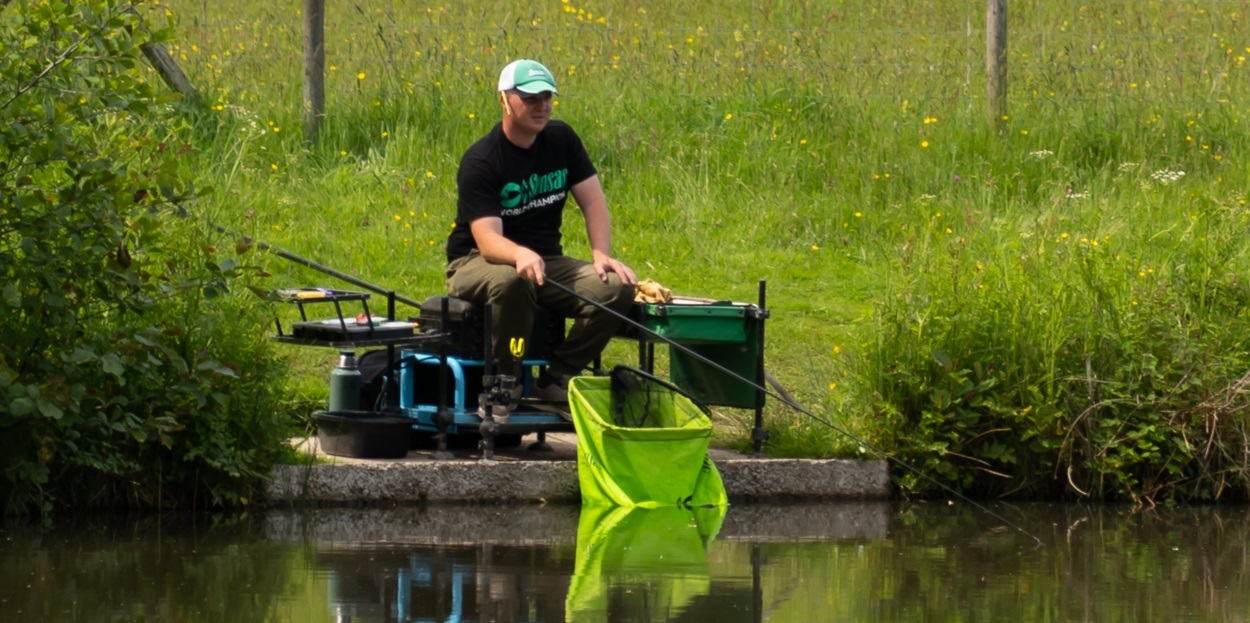
Cast a line and get back to your happy place
As we near National Fishing Month in August, Natural Resources Wales (NRW) invites everyone to experience the joy and…
Read More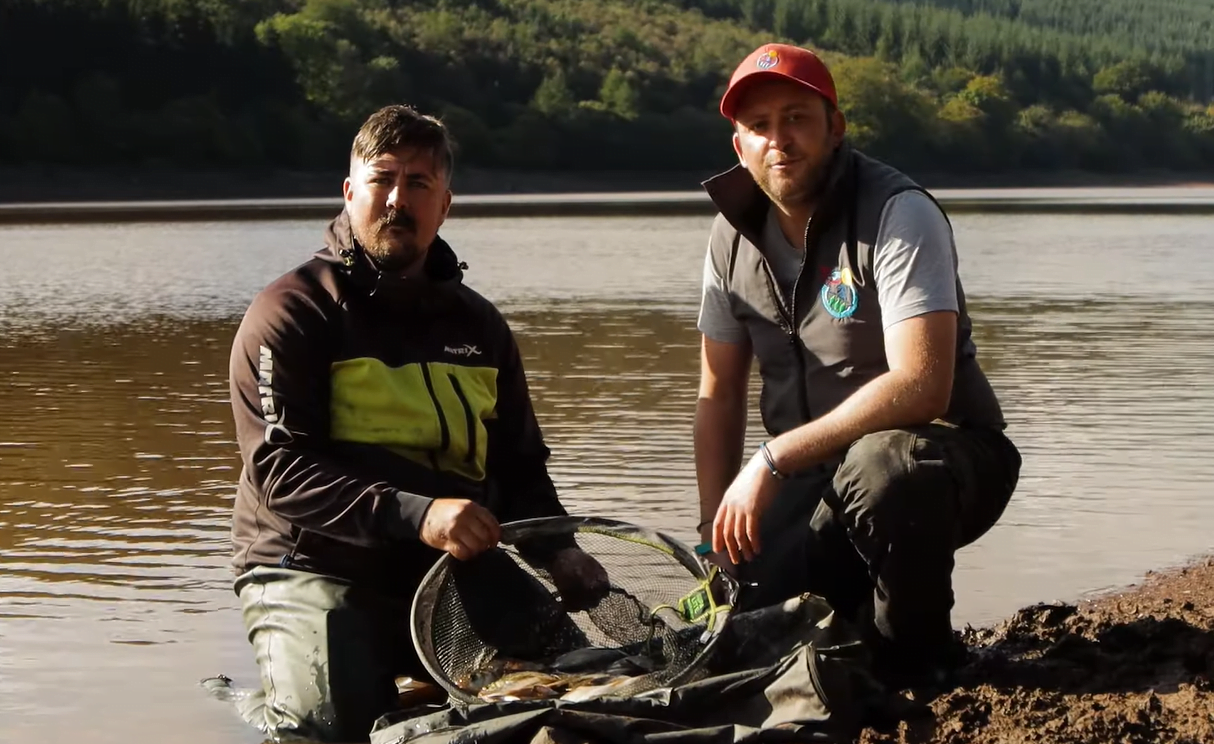
Take A Friend Fishing is Back
‘Take a Friend Fishing’ is on from 27th July to 1st September 2024 for National Fishing Month! Get together with…
Read More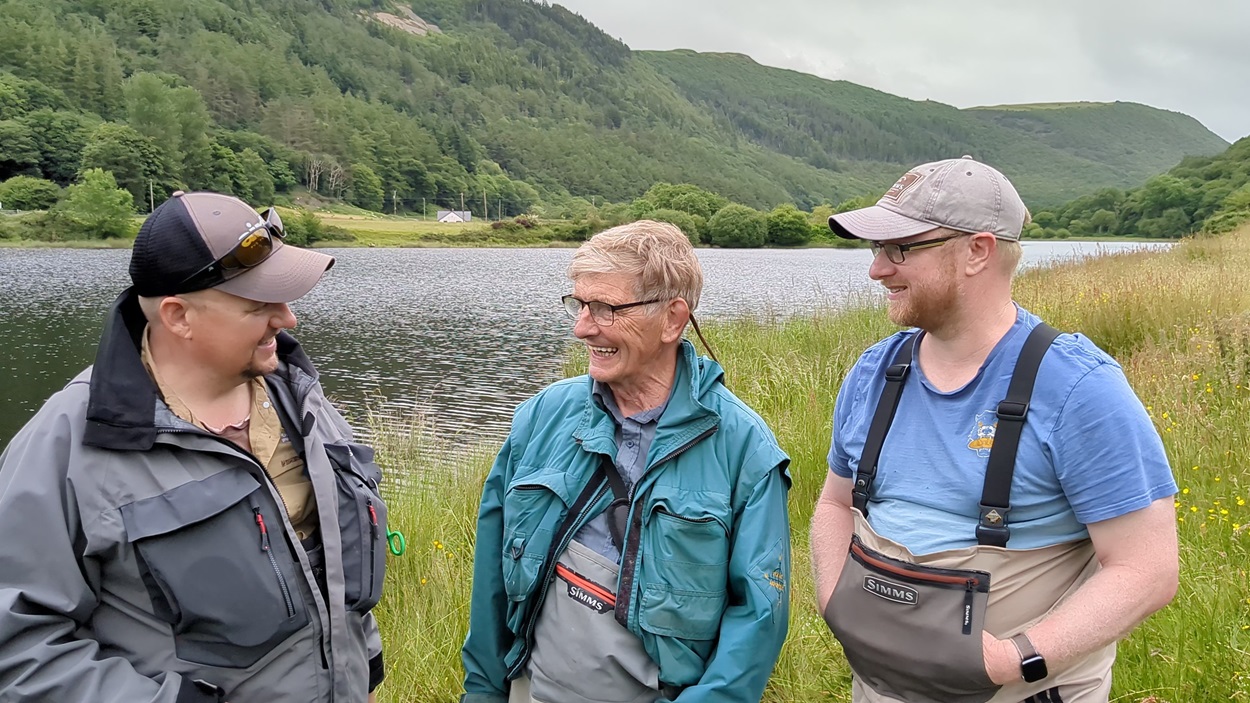
10 Lake Challenge VIDEO - Aberystwyth Angling Association
In this ‘summer special’ video Alan ‘Parf’ Parfitt, Ceri Thomas and Mark Evans take on the ’10 Lake Challenge’ which…
Read More
